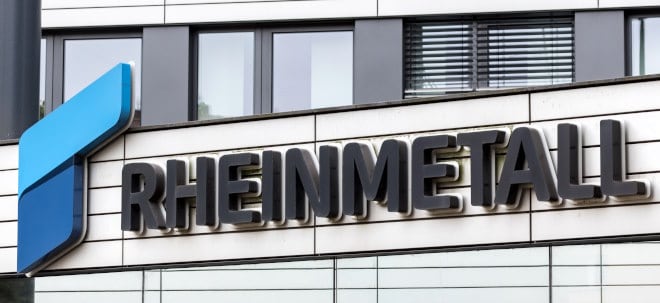Budget and cyber pressures impede tech upgrades by state and local governments, finds EY survey
New research from the EY Center for Government Modernization finds a surge in state and local governments' AI use and an interest in private-sector collaboration as modernization efforts increase in coming years
NEW YORK, June 23, 2025 /PRNewswire/ -- State and local government IT leaders must balance legacy system modernization with near-term financial and security priorities, according to a new survey from Ernst & Young LLP (EY US).
The EY State and Local Government Tech Modernization Survey, part of a series by the EY Center for Government Modernization, surveyed 300 US state and local IT leaders on their tech modernization efforts. Findings reveal that while government IT leaders want to modernize legacy systems and adopt artificial intelligence (AI), modernization is a lower priority for this fiscal year (47% said it was a top priority) compared with some of the top priorities, which are reducing costs (56%) and improving cybersecurity (54%) amid growing financial and security pressures.
"State and local IT leaders recognize the imperative to modernize systems, but also need to lower costs and combat escalating cyber threats in the current environment," said Chris Estes, EY US Technology Leader for the US State, Local & Education Market.
AI adoption rises despite regulatory and security challenges
The survey found AI use among state and local government agencies has roughly tripled in five years, rising from 13% five years ago to 45% today. Generative AI use also grew from 12% five years ago to 39% today. Some of the AI priorities for state and local government agencies this fiscal year include employee training/upskilling (49%), comprehensive implementation/usage strategies (49%), and building public trust in government use of AI (48%).
However, this enthusiasm is tempered by concerns regarding the lack of clear regulations or government standards for AI development (78%) and cyberattacks becoming more sophisticated due to AI (82%).
"AI offers a powerful opportunity to achieve greater efficiency in a resource-constrained environment," said Estes. "But our survey reveals an acute awareness of the amplified cybersecurity and regulatory risks this technology brings. The real opportunity lies in agencies proactively embedding governance and security measures from the outset of their AI journey to fuel, rather than hinder, efficiency gains."
Private sector seen as innovation driver, but partnerships face hurdles
Faced with tight budgets and security concerns, the survey reveals a potential path forward: strategic collaboration with the private sector.
"For state and local governments, the path to adopting innovative technologies is not a solo journey," said Suzanne Vitale, EY Americas Government & Public Sector State Local & Education Leader. "Strategic partnerships with private sector innovators that are built on trust and a clear understanding of public sector realities offer a vital bridge to modernization."
The majority (89%) of state and local government IT leaders acknowledge the mutually useful potential of private sector innovation in improving agency mission outcomes. Underscoring the benefit, nearly two-thirds (61%) worry about their agency becoming obsolete without increased private sector engagement. State and local government IT leaders said some of the top benefits of effectively using private sector innovations include:
- Improvement of public services (60%)
- Faster adoption of new technologies within government agencies (51%)
- Enhancing the quality of life for citizens (51%)
Most (79%) state and local government IT leaders say that if fewer barriers existed, their agency would be more likely to leverage private sector innovations. But these government IT leaders face challenges in using private sector innovations, most often noting cybersecurity concerns (39%), a lack of skilled employees within their own organization (38%), and a lack of funding (35%).
Methodology
EY US commissioned a third-party vendor to conduct the EY State and Local Government Tech Modernization Survey. The online survey included n=300 US full- and part-time government employees who have primary/shared IT decision-making power at the state and/or local level (n=150 state and n=150 local). The survey was fielded between February 15 and February 28, 2025. The margin of error (MOE) for the total sample at a 95% confidence interval is +/- 6 percentage points (ppts).
About EY
EY is building a better working world by creating new value for clients, people, society, and the planet, while building trust in capital markets.
Enabled by data, AI and advanced technology, EY teams help clients shape the future with confidence and develop answers for the most pressing issues of today and tomorrow.
EY teams work across a full spectrum of services in assurance, consulting, tax, strategy, and transactions. Fueled by sector insights, a globally connected, multi-disciplinary network and diverse ecosystem partners, EY teams can provide services in more than 150 countries and territories.
All in to shape the future with confidence.
EY refers to the global organization, and may refer to one or more, of the member firms of Ernst & Young Global Limited, each of which is a separate legal entity. Ernst & Young Global Limited, a UK company limited by guarantee, does not provide services to clients. Information about how EY collects and uses personal data and a description of the rights individuals have under data protection legislation are available via ey.com/privacy. EY member firms do not practice law where prohibited by local laws. For more information about our organization, please visit ey.com.
CONTACT: Lauren Hare, lauren.k.hare@ey.com
![]() View original content to download multimedia:https://www.prnewswire.com/news-releases/budget-and-cyber-pressures-impede-tech-upgrades-by-state-and-local-governments-finds-ey-survey-302482817.html
View original content to download multimedia:https://www.prnewswire.com/news-releases/budget-and-cyber-pressures-impede-tech-upgrades-by-state-and-local-governments-finds-ey-survey-302482817.html
SOURCE EY


